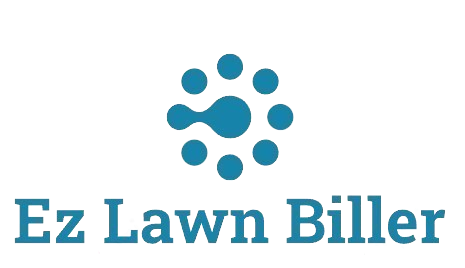Step-by-Step: How to Set Pricing in Your Lawn Business
Setting the right pricing in your lawn care business is crucial for achieving profitability and ensuring client satisfaction. This blog post will guide you through a structured approach to pricing your services effectively. We’ll explore various strategies, considerations, and tools to help you establish prices that reflect the value of your services while remaining competitive in the market.
In the lawn care industry, pricing can vary significantly based on several factors, including geographical location, competition, service types, and customer expectations. As a business owner, it’s vital to grasp these elements to maximize your revenue while providing high-quality service. This article will cover a step-by-step approach to setting your lawn care pricing, including how to analyze costs, understand your market, and utilize innovative tools like lawn billing software to streamline your operations.
We’ll delve into the intricacies of pricing strategies, offer practical tips for implementation, and provide examples to clarify each point. By the end of this post, you will have a comprehensive understanding of how to price your services effectively, paving the way for a successful lawn care business.
Understanding Your Costs
The first step in setting prices for your lawn business is understanding your costs. You need to analyze both fixed and variable costs associated with your operation. Fixed costs are expenses that remain constant regardless of the number of services you provide, such as insurance, equipment financing, and office space. Variable costs, on the other hand, fluctuate based on your service volume, including fuel, labor, and supplies.
For instance, if you’re spending $1,000 a month on equipment payments and another $500 on insurance, you need to account for these amounts when calculating your pricing. Additionally, track all variable costs associated with each job, such as the cost of seed, fertilizer, and labor for each job. Understanding these costs ensures that you do not set prices too low, which can eat into your profits.
Creating a comprehensive cost breakdown is essential. Consider using a simple spreadsheet to log expenses and income. This method allows for easy adjustments and visibility into your overall business health. Furthermore, if you utilize a lawn service software like [Lawn Biller Software](https://ezlawnbiller.com/), you can streamline this process, making your calculations more accurate and less time-consuming.
Researching the Market
Once you have a grasp on your costs, the next step is researching your local market. Understanding what competitors are charging for similar services in your area will help to position your pricing effectively. Start by surveying your competitors, checking their websites, and possibly even calling them to inquire about their rates.
It’s important to consider the services they offer and the level of quality they provide. If you find that most competitors are charging between $40-$60 per lawn mowing service, this gives you a benchmark. However, also take note of what differentiates your services. If your business offers premium services or guarantees, you may justify a higher price point.
Additionally, consider regional pricing variations—customers in affluent neighborhoods may be willing to pay more for premium services. Conversely, price-sensitive neighborhoods may require more competitive pricing. Understanding these dynamics will enable you to create pricing tiers that cater to various customer segments, enhancing your business’s appeal.
Defining Your Pricing Strategy
After analyzing your costs and researching the market, it’s time to define your pricing strategy. There are several strategies to consider, including cost-plus pricing, value-based pricing, and competitive pricing. Cost-plus pricing involves adding a markup to your service costs to ensure profitability; for instance, if your total costs for mowing a lawn are $30, you might charge $50 to include your labor and profit margin.
Value-based pricing, on the other hand, focuses on the perceived value of your services to the customer. For instance, if you offer specialized services that result in superior lawn health, you can command higher prices based on the benefits value rather than just costs. Competitive pricing, however, is more about aligning your prices with what others in your market are charging.
Using a combination of these strategies can be beneficial. For example, you might set a baseline using cost-plus pricing but adjust your prices higher for specialized services where you can demonstrate greater value to your clients. Implementing a lawn service app can also help manage different pricing strategies effectively.
Creating Pricing Packages
To attract a broader range of clients, consider creating pricing packages that bundle services together. Packages can provide clients with a clearer understanding of what they receive and often encourage them to opt for more comprehensive services. For instance, a basic package could include mowing and edging, while a premium package might encompass fertilization, aeration, and pest control.
Moreover, offering seasonal packages can entice clients to commit to ongoing services. For instance, a spring package could include cleanup, fertilization, and mulching, which encourages customers to invest in their lawn’s health throughout the spring season. Presenting these options can also help you manage your resources more effectively and calculate expected income during busy periods.
Additionally, using tools like [Lawn Biller Software](https://ezlawnbiller.com/) allows you to create and manage these packages efficiently, making it easier for clients to choose the best option for their needs. By leveraging technology, you can ensure that your pricing packages are both attractive and practical.
Communicating Value to Clients
Once you have established your pricing, the next step is communicating the value of your services to clients. Effective communication can significantly influence how clients perceive your pricing. Emphasize how your services improve their lawn’s health and overall aesthetic, and provide testimonials or case studies that showcase your past successes.
Utilize marketing materials that include before-and-after photos, service descriptions, and client testimonials. Additionally, maintaining a strong online presence through social media can amplify your message. Share helpful lawn care tips, success stories, and informative content related to your services, which builds trust and positions you as an expert in the field.
Moreover, ensure that your pricing aligns with your brand message. If your lawn care business is positioned as a premium provider, your pricing should reflect that through your marketing strategies. Using a lawn company computer program can further assist in maintaining consistent communications and professional interactions with clients.
Adjusting Prices Over Time
Pricing in the lawn care industry shouldn’t be static. As your business grows, or as market conditions change, you should be ready to reevaluate your pricing structure. Consider factors such as increased operating costs, changes in demand, or new services you may offer when deciding to adjust your prices.
It’s important to communicate any price changes to your clients transparently. Providing notice ahead of time and explaining the reasons for the increase can help mitigate negative reactions. Offering existing customers a loyalty discount or grandfathering them into the old pricing for a limited time can also enhance customer retention.
Additionally, regularly reviewing your pricing strategy enables you to adapt and remain competitive. Utilizing software solutions such as [lawn service software](https://ezlawnbiller.com/) can assist in tracking pricing effectiveness and client responses, allowing you to make informed decisions based on data rather than assumptions.
Leveraging Technology for Efficiency
In today’s digital age, leveraging technology can streamline your pricing and billing processes significantly. Implementing a lawn service app simplifies managing client information, scheduling services, and invoicing. Such tools not only reduce administrative workload but also enhance accuracy in billing, ensuring that your clients receive correct invoices without discrepancies.
For instance, with [Lawn Biller Software](https://ezlawnbiller.com/), you can automate your billing processes, track service history, and manage client databases all in one platform. This efficiency allows you to focus more on delivering high-quality services rather than getting bogged down in paperwork.
Furthermore, technology can aid in client communication, allowing you to send reminders, follow-ups, and promotional offers directly through the app. Keeping your clients engaged and informed can lead to higher customer satisfaction and loyalty, ultimately resulting in repeat business and referrals.
Conclusion
Setting the right pricing in your lawn business is a critical factor that influences your overall success. By understanding your costs, researching the market, defining your pricing strategy, and effectively communicating your value, you can create a pricing structure that not only attracts clients but also ensures profitability.
Utilizing technology, such as lawn billing software and service apps, can further enhance your pricing strategy, streamline operations, and improve client relationships. As the landscape of the lawn care industry evolves, remain flexible and willing to adjust your pricing to meet market demands while providing exceptional services.
In conclusion, take the time to devise a thoughtful pricing strategy and be prepared to adapt over time. By doing so, you’ll not only sustain your lawn care business but also promote its growth and success in a competitive marketplace. Start implementing these strategies today and watch your business flourish!




